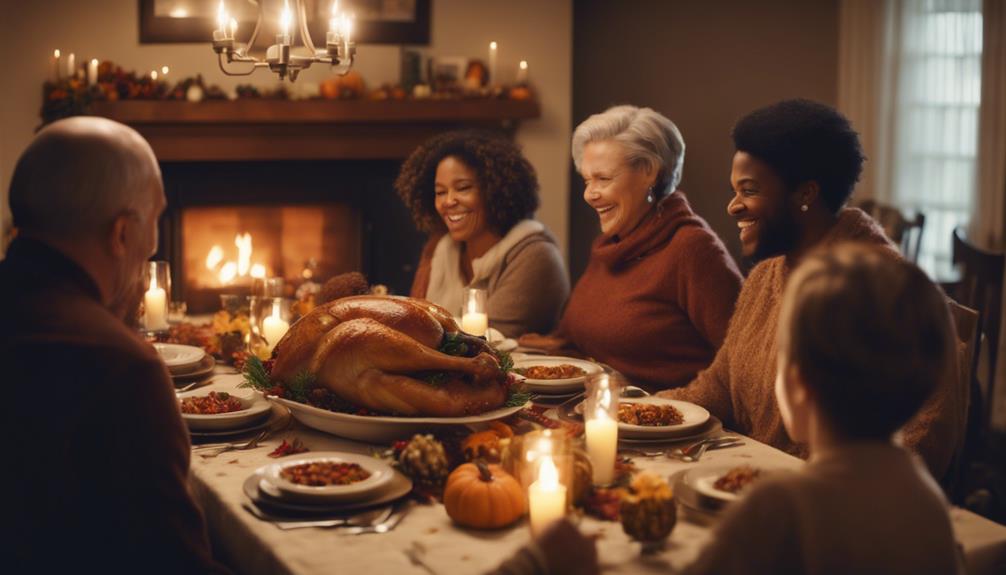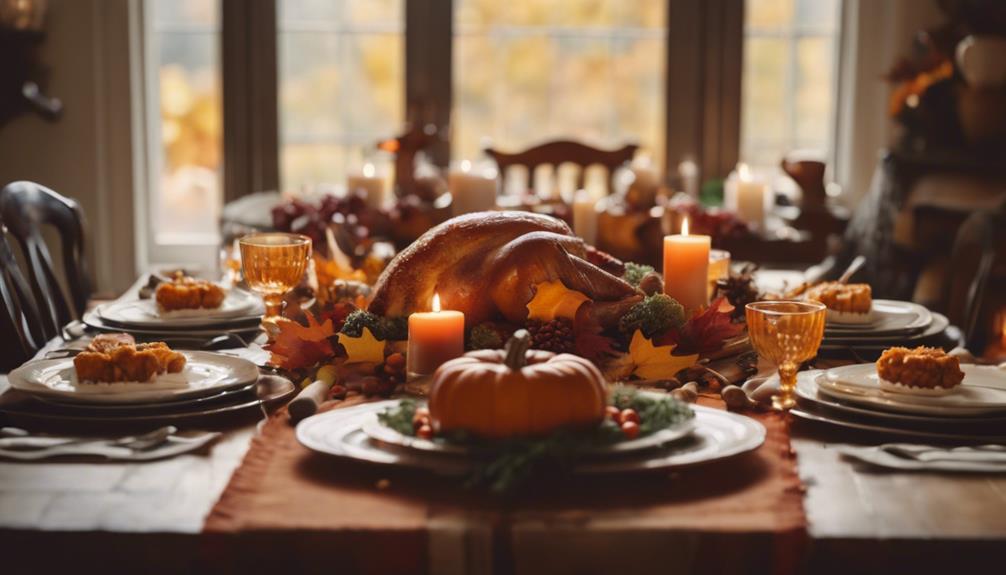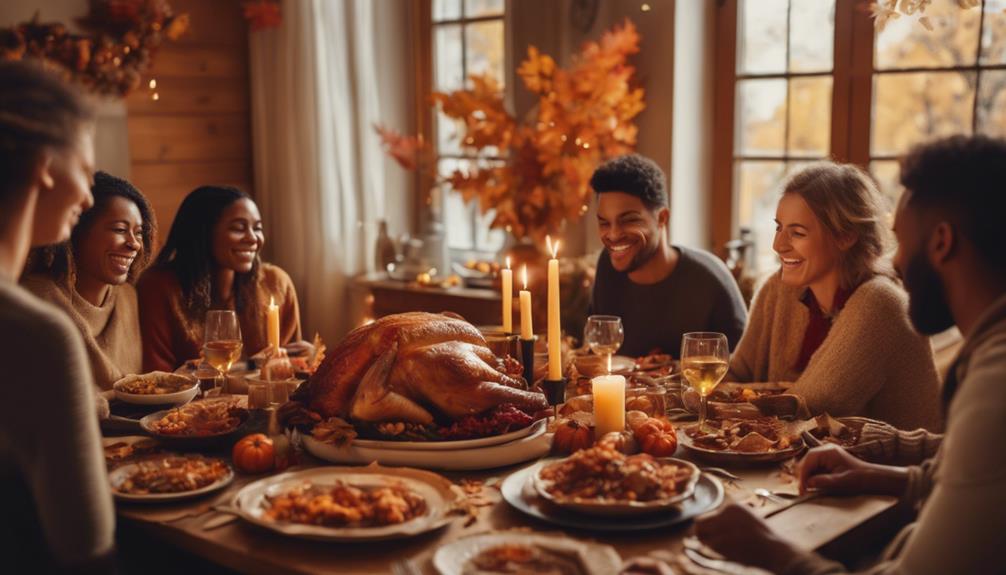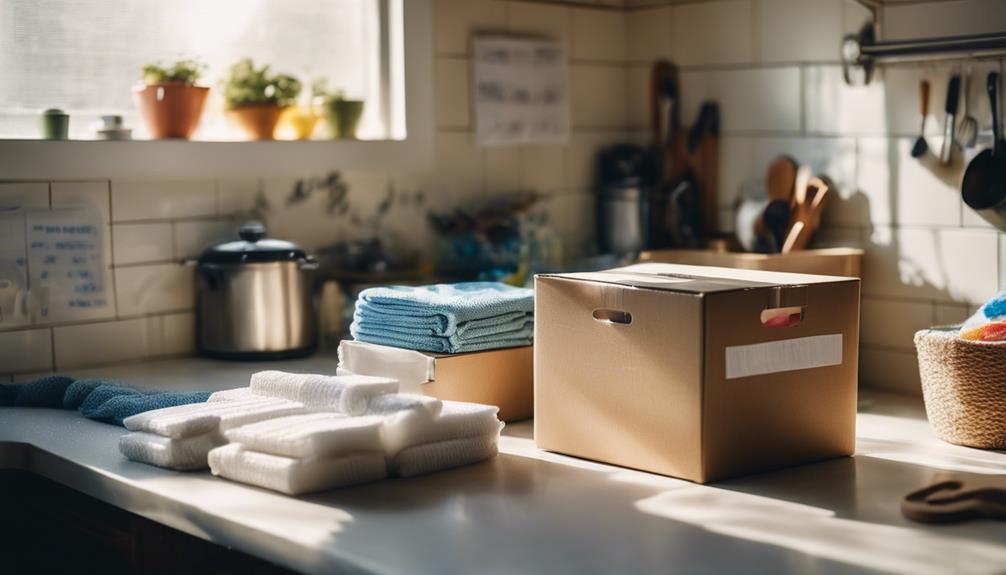As an expat, embracing Thanksgiving traditions means gathering with friends and loved ones to foster warmth and connection. You can celebrate with traditional foods like turkey, stuffing, and pumpkin pie, while also blending in dishes from your own heritage. Creating unique family customs allows you to strengthen bonds, whether it’s sharing stories around the table or enjoying outdoor activities. Consider participating in local American customs like the Macy’s Thanksgiving Day Parade or volunteering at shelters. This holiday is all about gratitude, belonging, and connection, so there’s so much more to discover about making it special in your own way.
Key Takeaways
- Gather with fellow expats and local friends to create a family-like atmosphere, strengthening connections and celebrating together.
- Incorporate traditional Thanksgiving dishes like turkey and pumpkin pie while blending in your native cuisine for a unique feast.
- Participate in local customs, such as volunteering or attending parades, to deepen community ties and enhance your holiday experience.
- Establish your own family traditions, like storytelling or outdoor activities, to create lasting memories and celebrate Thanksgiving uniquely.
Sharing Time With Loved Ones

Thanksgiving is all about gathering with loved ones, whether they're family or friends, to share warmth and create lasting memories. You might find yourself surrounded by familiar faces, laughing and reminiscing about past Thanksgivings. Unlike other holidays, there's minimal commercialization and no pressure to give gifts, allowing you to focus on what truly matters.
If you're an expat, friends often become family, filling your home with joy. You cherish those annual gatherings with American relatives, relishing the chance to celebrate traditions together. This holiday offers a unique opportunity to strengthen bonds, whether you're sharing stories or simply enjoying each other's company.
Embracing these moments can enrich your Thanksgiving experience and create a sense of belonging, no matter where you are.
Celebrating With Traditional Foods
Gathering around the table, you'll find that traditional Thanksgiving foods like turkey, stuffing, and pumpkin pie are integral to the celebration. These dishes create a familiar atmosphere, evoking memories of home even if you're miles away. As an expat, blending your native cuisine with classic American staples can enhance the experience and foster connections.
| Traditional Foods | Cultural Significance |
|---|---|
| Turkey | Symbol of abundance |
| Stuffing | Represents comfort and warmth |
| Pumpkin Pie | Celebrates autumn harvest |
| Pecan Pie | A sweet Southern tradition |
Embracing these foods not only honors American customs but also allows you to share your heritage, creating a unique culinary experience that resonates with everyone at the table.
Embracing American Holiday Customs

Embracing American holiday customs can enrich your Thanksgiving experience, allowing you to connect more deeply with the culture and create lasting memories.
Participate in traditions like watching the Macy's Thanksgiving Day Parade or volunteering to serve meals at a local shelter. You might also enjoy the excitement of Black Friday shopping, which kicks off the holiday season.
Decorating your home with autumn-themed items can help you feel the festive spirit. Additionally, consider gathering with friends for a Friendsgiving celebration, blending your cultural background with American practices.
Each of these customs offers a unique way to immerse yourself in the holiday, fostering connections and enhancing your appreciation of the season.
Enjoy the journey of discovery as you embrace these traditions!
Creating Unique Family Traditions
Creating unique family traditions during the holiday can strengthen your bonds and provide cherished memories for years to come.
Think about what activities resonate with your family. You might start a tradition of sharing stories around the dinner table, where everyone recounts their favorite Thanksgiving memory.
Alternatively, consider cooking a special dish that reflects your family's heritage—this can be a delightful fusion of flavors.
If you enjoy nature, plan an annual hike or picnic in a picturesque location to celebrate Thanksgiving outdoors.
Don't hesitate to mix it up each year; whether it's choosing a new theme or location, these variations can create excitement and anticipation.
Embrace your creativity, and let your family's unique story unfold during this special time.
Reflecting on Gratitude and Connection

Thanksgiving serves as a powerful reminder for you to reflect on the connections that enrich your life, whether they're with family, friends, or the new traditions you've embraced.
It's a time to pause and appreciate the relationships that support you, especially as an expat maneuvering a new culture. You might find joy in sharing meals with friends who've become family or participating in local customs that deepen your sense of belonging.
Each moment spent together fosters gratitude, allowing you to connect over shared experiences and stories. Remember, embracing gratitude not only enhances your holiday but strengthens your ties to the community around you.
This Thanksgiving, take time to acknowledge the connections that truly matter in your life.
How can I incorporate Thanksgiving traditions into my home decor with different color schemes?
Transform your home with color this Thanksgiving by incorporating traditional hues like warm oranges, deep reds, and golden yellows into your decor. Use these colors in table settings, centerpieces, and throw pillows to infuse your home with the spirit of the season. Embrace the beauty of fall with these vibrant color schemes.
How Can Expats Embrace American Thanksgiving Traditions?
Expats can easily embrace American Thanksgiving traditions by incorporating American football idioms for expats into their celebrations. They can host a football-themed game or incorporate football-themed decorations. Additionally, they can prepare a traditional Thanksgiving meal and enjoy the festivities with friends and family.
Conclusion
As you gather around a table adorned with both turkey and dishes from your homeland, you blend the old and the new, creating a vibrant tapestry of flavors and memories.
While the laughter of friends fills the air, you feel the bittersweet ache of loved ones far away.
Yet, in this mix of joy and longing, you find a deeper connection to your new home, crafting a Thanksgiving that celebrates both your roots and the journey ahead.









